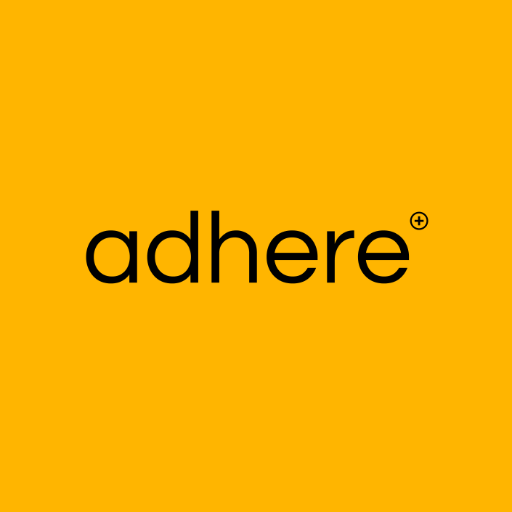Practical Journaling Guide-reflective journaling and time management tool
AI-Powered Journaling for Self-Improvement
What tools for journaling do you specialize in?
How can I align my daily actions with my longer-term goals?
Help me reflect on my day's activities and what to improve tomorrow.
Help me analyze my actions in life, comparing what I want vs. what I need.
Assist me with the 24-hour time block chart.
Related Tools
Load More
JournalGPT
Daily Journal Analysis

Simple Journal
A simple, reflective daily journal.

Journal
A Custom GPT-powered Digital Diary for Reflective Journaling, Personal Growth, and Emotional Wellness

Journal, Diary, Memories: Daybook - Log Your Life
Create, securely store, and reflect on your journal entries with Daybook, your personal journal. Access memories anytime via https://daybook.app or Mobile app. Chat with your journal for insights and growth. Powerful search and summaries make Daybook a g
My Morning Journal
A multi-section interactive journal designed to kick-start your day with purpose and clarity.

Reflections Journal
Mindfulness-focused journal with abstract images and thought-provoking prompts.
20.0 / 5 (200 votes)
Overview of Practical Journaling Guide
Practical Journaling Guide is designed to help individuals integrate reflective journaling into their daily lives with the specific aim of aligning daily actions with long-term goals and personal happiness. Unlike traditional journaling tools that focus purely on self-expression, this guide emphasizes actionable self-reflection and time management. By offering structured journaling templates, users can examine the contrast between what they feel compelled to do versus what truly adds value to their life. Through this method, the guide enables users to make more informed, purposeful decisions in their day-to-day activities. For example, a user might feel the urge to spend an afternoon scrolling through social media, but through journaling, they recognize that dedicating this time to learning a new skill would bring more fulfillment. Practical Journaling Guide helps users identify such misalignments and encourages them to focus on actions that promote long-term happiness.

Core Functions of Practical Journaling Guide
Daily Action Alignment
Example
A user lists activities they feel like doing, such as watching TV, versus activities they need to do, like working on a personal project. The third column is used to reflect on which choice would lead to greater long-term satisfaction.
Scenario
Imagine a student who feels overwhelmed with assignments but is tempted to procrastinate. By using the journaling template, they can compare the short-term relief of avoiding work with the long-term benefits of completing tasks on time. This reflection helps them prioritize their efforts toward actions that reduce stress and increase academic success.
24-Hour Time Block Chart
Example
A user color-codes their daily activities into green (value-add), yellow (necessary but neutral), and red (wasteful). This visual representation helps them understand how much time they are dedicating to productive versus unproductive activities.
Scenario
Consider a professional balancing a busy work schedule with personal commitments. By filling out the time block chart, they realize they spend several hours a day on low-value activities like excessive meetings or aimless internet browsing. This insight encourages them to restructure their day to focus more on meaningful tasks, such as strategic planning or self-care.
Reflective Journaling Prompts
Example
Prompts such as 'What did I do today that aligned with my long-term goals?' or 'Which activities drained my energy without adding value?' help users dive deeper into their daily actions and their impact on overall well-being.
Scenario
A user trying to improve their work-life balance might struggle to identify why they feel constantly fatigued. Through reflective journaling, they discover that while they are productive at work, their personal time is consumed by draining, non-rewarding activities. This realization prompts them to make changes, like setting boundaries for work hours and engaging in more fulfilling hobbies.
Target Audience for Practical Journaling Guide
Individuals Seeking Personal Growth
This group includes people who are motivated to improve their lives by aligning their daily activities with their long-term goals. They are likely to benefit from structured self-reflection to identify areas of improvement and to cultivate habits that contribute to their overall well-being.
Professionals and Students Managing Busy Schedules
Professionals and students who need to manage their time effectively while juggling multiple responsibilities will find the time block chart particularly useful. This group benefits from the guide's focus on distinguishing between being busy and being productive, helping them optimize their schedules for better outcomes.

Guidelines for Using the Practical Journaling Guide
1. Visit Website
Visit aichatonline.org for a free trial without login, no need for ChatGPT Plus. Start exploring the Practical Journaling Guide without any commitments.
2. Select Your Journaling Tool
Choose from different templates designed for self-reflection, time management, and goal alignment. Options include daily action alignment sheets and time block charts.
3. Fill Out the Template
Begin by filling out the template based on your current needs. Reflect on what you feel like doing versus what you need to do for long-term fulfillment, or color-code your 24-hour time block chart.
4. Reflect and Analyze
Review your entries to identify patterns, inefficiencies, and areas of improvement. Use the templates to guide your self-reflection and make more value-driven decisions.
5. Adjust and Repeat
Adjust your daily actions and time management strategies based on your reflections. Regularly update your journal to keep track of your progress and stay aligned with your goals.
Try other advanced and practical GPTs
Cynical Chef
Your culinary guide with a twist of sarcasm.

Magic SEO AI Blog Writer
AI-Powered SEO Blog Writing Tool

Title Muse
AI-Powered Titles for Every Content

Peña Prodigy
UNLEASH YOUR POTENTIAL WITH AI-DRIVEN TOUGH LOVE.

Anxiety Coach ❤️🔥
AI-powered solutions for anxiety relief

DAD
AI-powered fatherly wisdom for all.

WiFi Assistant
AI-Powered WiFi Optimization Tool

Expert AI Consultant
AI-Powered Solutions for Your Business

Procurement Legends Guide
AI-driven procurement excellence

Jordan Peterson - Honest Psychologist
AI-powered insights for personal and professional growth.

Gödel's Phenomena Analyst
Explore Reality Beyond with AI-Powered Insights

Ask GPT: Who is hiring?
AI-driven job search made easy

- Self-Reflection
- Goal Setting
- Time Management
- Daily Planning
- Habit Tracking
Common Questions About Practical Journaling Guide
What is the Practical Journaling Guide?
The Practical Journaling Guide is a personal development tool that helps users align their daily actions with long-term goals through structured journaling templates. It focuses on reflective journaling and time management to improve well-being, productivity, and happiness.
How does the daily action alignment template work?
The daily action alignment template is a three-column sheet where users list what they feel like doing versus what they really need to do for fulfillment. The third column is for self-reflection, helping users identify discrepancies and plan better actions.
What is the 24-hour time block chart?
The 24-hour time block chart allows users to color-code their daily activities based on their value contribution. Green represents productive, value-added activities, yellow is for necessary but not high-value tasks, and red indicates activities that waste time.
Can I use the guide for long-term goal setting?
Yes, the guide is designed to help you reflect on daily choices in the context of your long-term goals. It encourages ongoing adjustments to align daily actions with personal and professional growth, ultimately helping achieve long-term objectives.
Are there any prerequisites to using the Practical Journaling Guide?
No specific prerequisites are needed. All you need is a desire to reflect on your daily actions, improve time management, and align your life with what truly matters to you. The tools are intuitive and easy to use for anyone interested in personal growth.